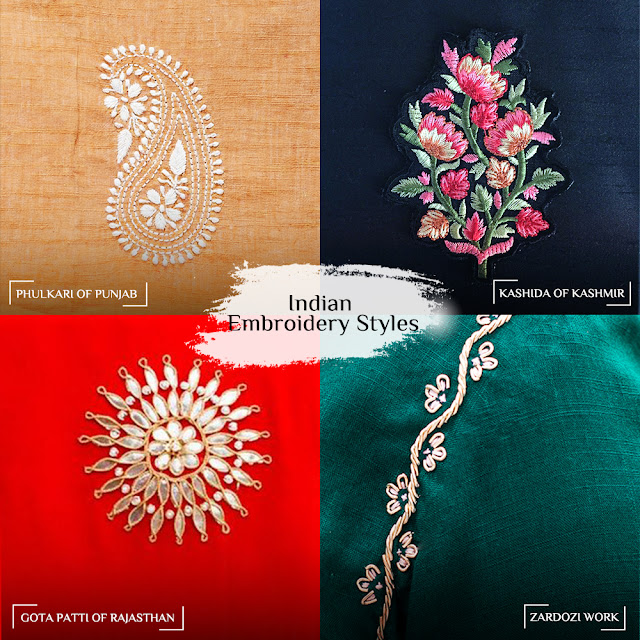Indian Embroidery Styles:- Embroidery styles are one of the highlights of Indian artistic
traditions. The old Indian fashion comprises such a huge variety of fabrics,
threads, stitches, and motifs that a person interested in it would simply be
left awestruck in the end. The embroidery styles, exclusive of each region give
a very good brief about the richness of the country and the hard work of the
communities who have been practicing them for generations. The popular
Indian embroidery styles are:
Chikankari
of Lucknow: Straight from the land of Tehzeeb and Nazaquat,
Chikankari is a delicate, intricate embroidery that has been introduced by Nur
Jahan, the wife Mughal emperor, Jahangir. A chicken fabric is created by bloc
printing particular patterns on it. Craftsmen then embroider the stitches along
with the pattern and finally when it is done, the fabric is washed to remove
the traces of the print.
Phulkari of
Punjab: Besides Sarson da saag and make di roti, Punjab is
also famous for its Phulkari embroidery. The stitches are embroidered on the
back of the cloth so that the design takes place in the front. The contrast of
colorful stitches on a subtle background gives a very outstanding look.
Kashida of
Kashmir: Since farming is not possible in the harsh winters of
Kashmir, this embroidery became a source of daily bread for people in Kashmir.
The embroidery is mainly done on fabrics such as wool and silk. The craftsmen
there stitch the beautiful scenes inspired by nature rather than any animal or
human figure.
Gota Patti
of Rajasthan: The thin strips of gold or silver ribbons are
hand-stitched on the patterns or motifs made on the fabric. The embroidery is
famous of Rajasthan and typically found over lehengas, odhnis, sarees, shawls
and even turbans.
Zardozi:
Said to exist from the time of Rigveda, the zardozi embroidery is not of some particular region or state,
rather it is known as embroidery of India. In this embroidery, the craftsmen
fill in the elaborate designs with gold and silver threads. The magnificence is
amplified when pearls and precious stones are added further. However, because
of the scarcity of metals, the copper wire with gold and silver finish is used
nowadays.

Comments
Post a Comment